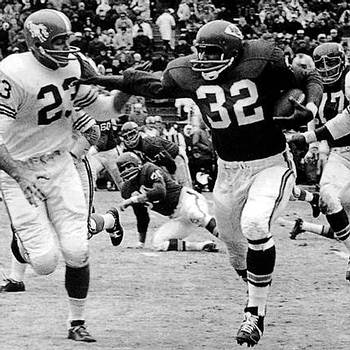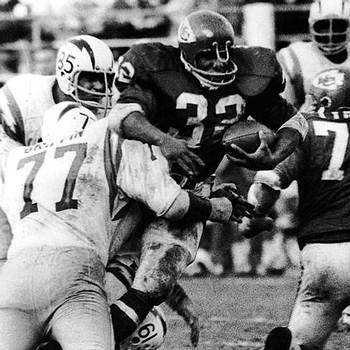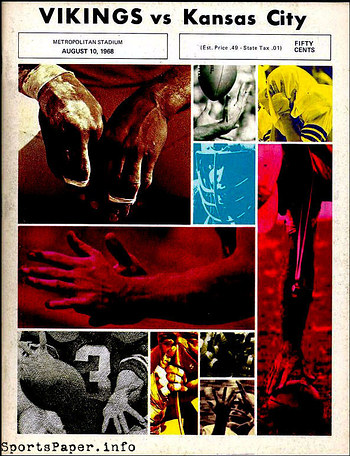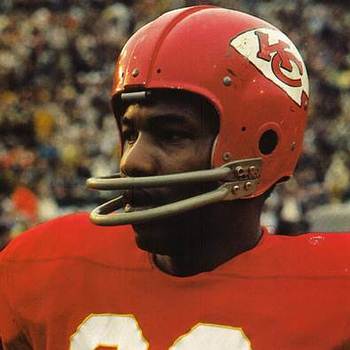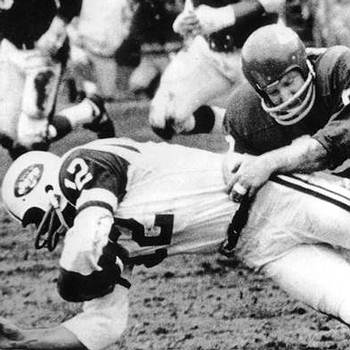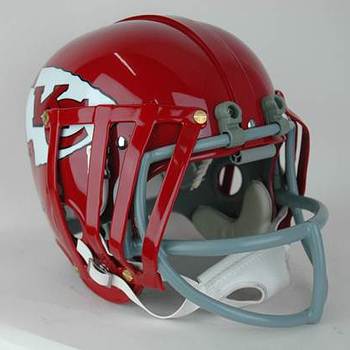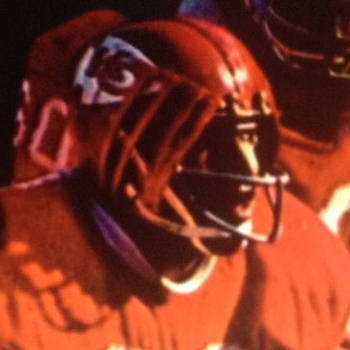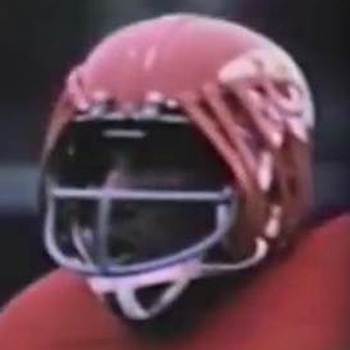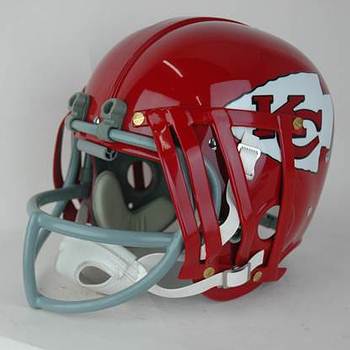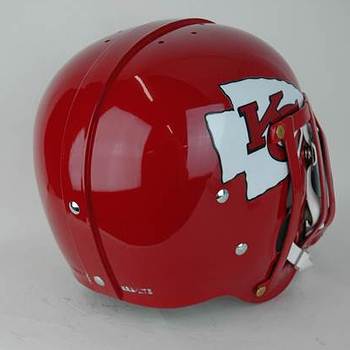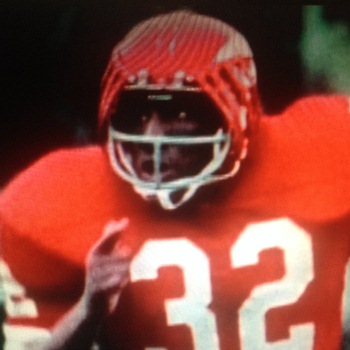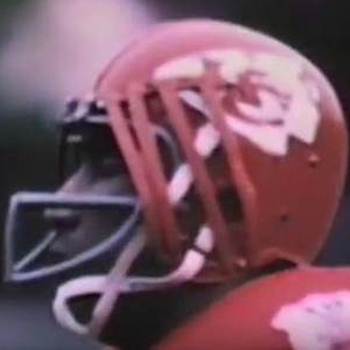A book could, and perhaps should be written about the life of Curtis
McClinton. A legend in his hometown of Wichita, Kansas for his football
prowess, political activism, role in community affairs, and setting a
positive example for others to follow, his stature was built on
achievement. An academic and athletic standout at Wichita North High
School, he utilized his All Big Eight hurdler’s speed and agility as a
three-time All Conference fullback at Kansas University, was named to a
number of All American teams as a senior, and is in the Kansas Hall Of
Fame. He is a member of the KU All Time Team and played a productive and
award winning eight year career with the Dallas Texans – Kansas City
Chiefs in the American Football League. He was 1962’s Rookie Of The
Year, a three-time AFL All Star, and was later inducted to the Missouri
Sports Hall Of Fame. He earned undergraduate, masters, and doctorate
degrees, served in the federal Senior Executive Service under two U.S.
Presidents, graduated from Harvard University’s Kennedy School Of
Government, was the Deputy Mayor For Economic Development in Washington,
D.C., was a calming and active influence during the race riots of 1968,
and became a successful businessman in Kansas City. By every measure,
Curtis McClinton was a success.
His excellent and versatile play allowed him to stand out
as a rusher and receiver for the first six seasons of his career, before
moving to tight end in 1968. During his time as the Chiefs AFL All Star
running back and exceptional backfield blocker, one that earned him the
Most Valuable Player Award in the AFL All Star Game following his rookie
season, his helmet featured both a two bar face mask, and later, the two
bar mask with the addition of a U-bar.
Throughout his career, McClinton had been the ultimate
team player. He was, with the great Abner Haynes, the central focus of
the Texans-Chiefs rushing attack in 1962 and ’63, serving as a potent
blocker for Haynes. In 1964 his productivity fell off, with blocking his
primary forte, only because Haynes was still effective and Southern
University rookie Mack Lee Hill showed exceptional potential. With the
death of Hill during the week preceding the final game of the ’65
season, McClinton again assumed a more prominent role in the Chiefs 1966
Super Bowl I year. By the start of the 1968 season a number of younger
backs had supplanted McClinton as the Chiefs primary rushing threat and
he had no difficulty in his role as a blocking back or special teams
player. As an All Everything end in high school and always an effective
receiver coming out of the backfield, Head Coach Hank Stram also
utilized McClinton at tight end. In part, the move was made to help both
McClinton and the team.
On August 10, 1968, the Chiefs defeated the Vikings 13 -
10 in their pre-season contest. During the game, McClinton suffered a
broken cheekbone, an injury noted in the newspaper articles following
the game. Attempting to return for the third game of the regular season,
he reinjured the cheekbone on September 22 against the Broncos and once
again, the injury was widely and publicly reported. During the 1968
season, McClinton missed a total of five games, presumably due to this
specific injury and when he returned, he spent most of his on-field time
at the tight end position. In order to better protect the area, Chiefs
equipment manager Bobby Yarborough, long known for his innovative
attempts to provide the highest level of player safety, the introduction
of the Dungard face masks to the squad, and the “homemade” external
padding on the surface of middle linebacker Willie Lanier’s helmet,
reconfigured McClinton’s face mask design. Experimenting with face mask
placement and combinations was “old hat” for Yarborough. His use of
additional one bar masks and their spacing had been used for years in
order to better protect Len Dawson, Fred Williamson, Sherrill Headrick,
Otis Taylor, and others from potential injury or the exacerbation of
existing damage.
McClinton’s injury received the similar “Yarborough
Treatment” with the fabrication of “strips” of single metal bars that
were then dipped in rubber and then red paint. The vivid red color marks
this specific mask as a precursor to the variously colored dipped face
masks that made their appearance in the NFL and World Football League in
1974. This very innovative alteration was initially applied to one side
of the helmet to protect the broken cheekbone and as McClinton revealed
in a recent interview, what was essentially “another faceguard on my
cheekbone, to provide greater protection and spread the force of the
blow” caused the helmet to fit in an unbalanced manner. McClinton
continued, noting “Originally, they just had it on one side. But when I
got hit, the helmet would end up leaning to that side and would often
come off, even though I was wearing a chinstrap, because it was heavier
on that side, the side with the extra faceguard. So they put it on the
other side to help balance the helmet, so it wouldn’t be heavier on one
side. We also thought it would be good to put it on both sides so the
opposing team wouldn’t know which side I’d been injured on. In other
words, it wouldn’t be as much of a target.”
The date that McClinton’s altered helmet made its debut
has never been confirmed although there is photographic evidence that it
was worn during the 1969 season and in Super Bowl IV. There is no doubt
that McClinton wore this protective innovation only after his cheekbone
fracture, or re-fracture of September 22, 1968. Approaching the 1968
season, Stram made a number of significant changes to the Chiefs roster
that saw the release or trades of a number of long time Chiefs and
shifted the playing position of others. McClinton however, entered the
season at his customary running back position, although he knew he would
be blocking more and running less with the emergence of Mike Garrett,
Robert “Tank” Holmes, and Wendell Hayes. It was not until after his
injury that he split time between the fullback and tight end positions.
Entering ‘69’s training camp, Stram had more changes in
mind, hoping to capitalize on the fine 12-2 mark of 1968. Two planned
upon changes were a permanent move to tight end for McClinton and
utilizing their great tight end Fred Arbanas, nearing the twilight of
his career, at offensive tackle. Once camp began, Arbanas demonstrated
that whatever had made him a six time All AFL selection and the tight
end on the All Time AFL Team, was still present and he both began and
ended the ’69 season as the Chiefs starting tight end. McClinton
remained the back-up and as he noted further in his recent interview,
“One thing about the injury is that it ended up changing the position I
played. I stayed in the backfield for a while, but then I went to
playing defense — I was a strong safety. Part of that was so that to
protect my head and my eyes. It enhanced my career, because I was
hitting, rather than being hit.” While McClinton was never officially
listed within any legitimate National Football League or AFL source as a
defensive player, there is little question that this ultimate team
player would have been willing to play as many and whatever positions
the Chiefs needed him to, including tight end, strong safety, and
special teams participant. As unusual and unique as this spectacular
helmet is, some mystery surrounds it. Mr. McClinton insists that his
injury was the result of a confrontation with Fred “The Hammer”
Williamson. There is no doubt that McClinton’s cheekbone injury occurred
on August 10, 1968 in the exhibition game versus the Vikings. There is
no doubt that his re-injury came in the third regular season game of
1968 against the Broncos. The newspaper reports are clear and
irrefutable. Every seasonal summary for ’68 indicates that McClinton did
not participate in five full games. However, any confrontation with “The
Hammer” occurred before 1968 because Williamson was released after the
1967 season and not resigned by any other AFL or NFL squad. Williamson
began his professional career with the Steelers in 1960 and then played
as a defensive back with the Oakland Raiders from 1961 through the ’64
season. He built his reputation with a purposeful self-aggrandizing
campaign that included his declaration that “The Hammer,” his
clothesline swiping forearm aimed at the head and/or neck of opponents,
was part of his game and a distinguishing feature. Most opponents viewed
the maneuver as dirty, beyond the rules, and a “cheap shot” meant to
injure. Mr. McClinton maintains that his cheekbone injury was a result
of a Williamson forearm blow.
McClinton dates the injury to 1964, Williamson’s final
season with the Raiders and before he was coincidentally traded to the
Chiefs prior to the ’65 season, for fellow defensive back Dave Grayson.
McClinton describes the helmet facemask change and injury by stating,
“That was the follow-up on the basic medical protection of my cheekbone.
My cheekbone was broken and I had an orbital blowout, which means my
eyeball came all the way out of the structure of my face and just kind
of hung there. There was a guy by the name of Fred Williamson, they
called him the Hammer, and he brought the hammer down on me. The way he
played was very, very detrimental, both to players and to the game
itself. He was a thug, to be quite frank about it, in terms of hitting
players in order to hurt them, not just to bring them down. It’s a rough
game, a game of hitting — that’s why you’re on the field. But there are
rules and regulations, and he deviated from that, and he did it with
cruelty and intent to injure.” In ’64, the Raiders and Chiefs faced off
on September 27th in Oakland and on November 8 in Kansas
City. Although the dissemination of news was much more limited in 1964
than it would be even four or five years later, there are no reports of
a McClinton injury or cheekbone fracture. The severity of the injury as
described by McClinton relative to his orbital damage, certainly would
have predicted his absence for at least one or two games, yet the
individual game results and statistics from the ’64 season indicate that
he played in every game, including those following both confrontations
against the Raiders and Williamson.
In 1964 McClinton did add the U bar to his usually worn
two bar mask and certainly that could be the additional though minimal
facial protection necessary to prevent further damage to an eye or
cheekbone. However, the timeline does not give clarity. With Williamson
joining the Chiefs from 1965 through 1967, it is possible that both he
and McClinton sparred during camp and practice and enmity was
established, but McClinton’s uninterrupted participation from his rookie
season of 1962 and in ’63 and ’64 when any game versus the Raiders
included a possible confrontation with Williamson, casts doubt on the
timing of such a devastating injury. Williamson was released from the
Chiefs prior to the ’68 pre-season and attempted to extend his football
career with Montreal of the CFL so the August 1968 injury was not
perpetrated by him. Of course, one would think that McClinton and any
other player would know with certainty who dealt such a telling and
injurious blow which leads us to perhaps one other possible conclusion.
In the mid-1990s, one of the NFL teams reported that
their star offensive player had received a broken jaw during a
hard-fought game against a team that had a defensive player that carried
a reputation of one who took the rules of contact right to their limit.
The official cause of injury was laid at the feet of this one defensive
player on a specific play. However, the truth was that the offensive
player had been injured in a mid-week brawl with one of his teammates
during a heated practice argument. The jaw was broken, never officially
reported, and the star played, at least into the second quarter of that
week’s game. Perhaps an initial cheekbone injury suffered by Mr.
McClinton was in fact caused by Williamson but not when he was with the
Raiders but instead, when he was one of McClinton’s Chiefs’ teammates!
Whatever the truth might be, the beautiful and innovative
Kansas City Chiefs helmet worn by Curtis McClinton during the 1969
season, and perhaps first seen in ’68, is a wonderful part of helmet
history.


